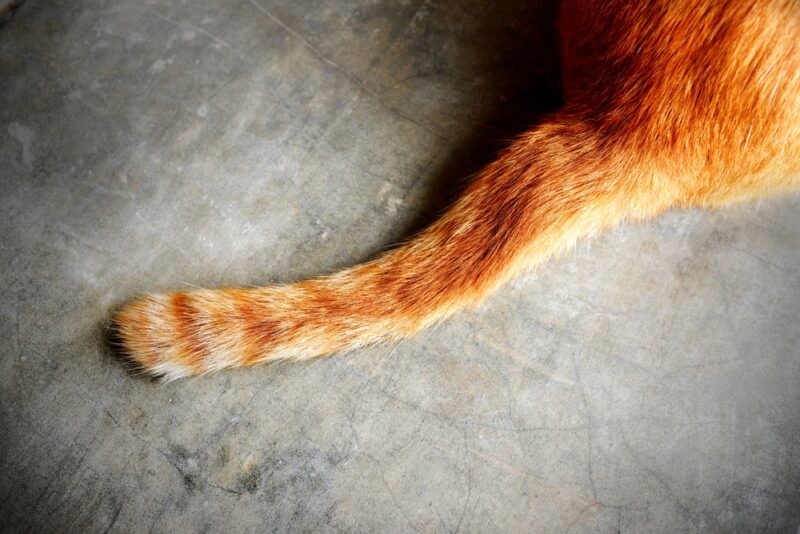Cats use their tails to communicate to the world through body language. You can tell a lot about a cat’s disposition by what their tail is doing. With that being said, cats usually do control their tails. No one is exactly sure how much control they have over their tails, but as it is essentially an extension of their spine, they do have control over it.
Cats sometimes use their tails to send deliberate messages (the “thump, thump, thump” on the floor meaning “stop what you’re doing before the claws come out”), but their tails also move involuntarily, similar to our involuntary laughing when something is funny or crying when sad.
Tail movements (flicking, wiggling) are thought to be more involuntary than the positions (high, low) they are held at.
A cat’s tail, along with their ears, will indicate what kind of mood they’re in most of the time. Let’s find out more.
Cat Tail Positions, Movements, & What They Mean
1. High Tail
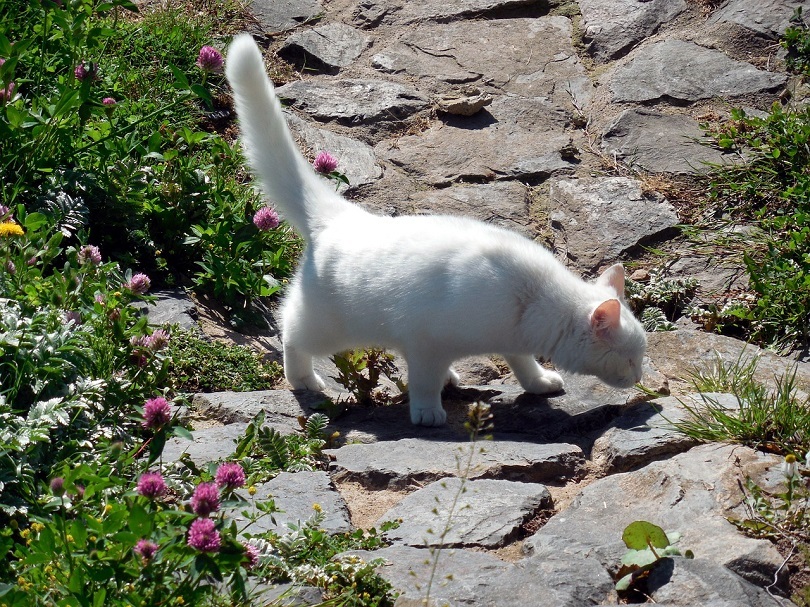
A high tail with a slight curve at the end usually indicates a happy cat that wants to spend time with you. He’s interested in attention or play.
A high tail that is straight up with all the hairs sticking up, however, is a frightened cat. This tail movement is an involuntary response to being startled, and usually accompanied by other gestures; ears back, haunches raised, and a hiss or growl.
2. Low Tail
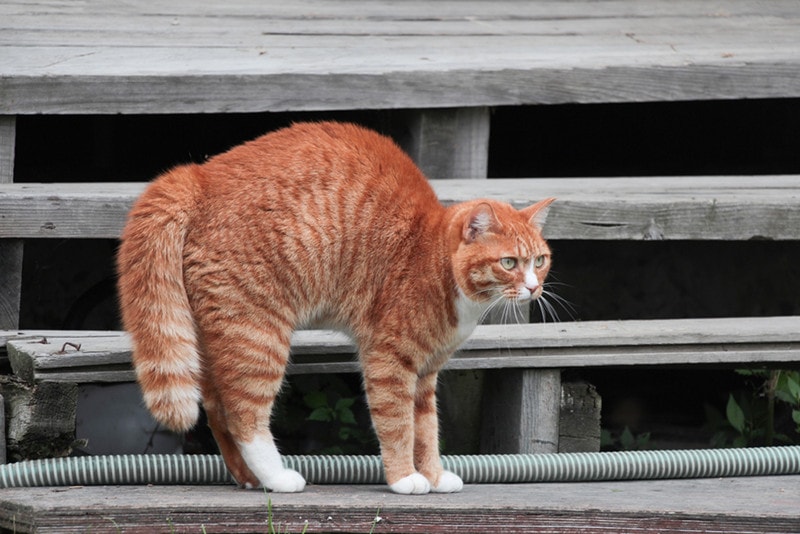
When a cat’s tail is low, pointing downward, this means the cat is in a negative mood. Think about it; when animals in the wild are frightened or submissive, their tails go down or between their legs. They want to be as invisible as possible, so they hide their tails away.
3. Neutral Tail
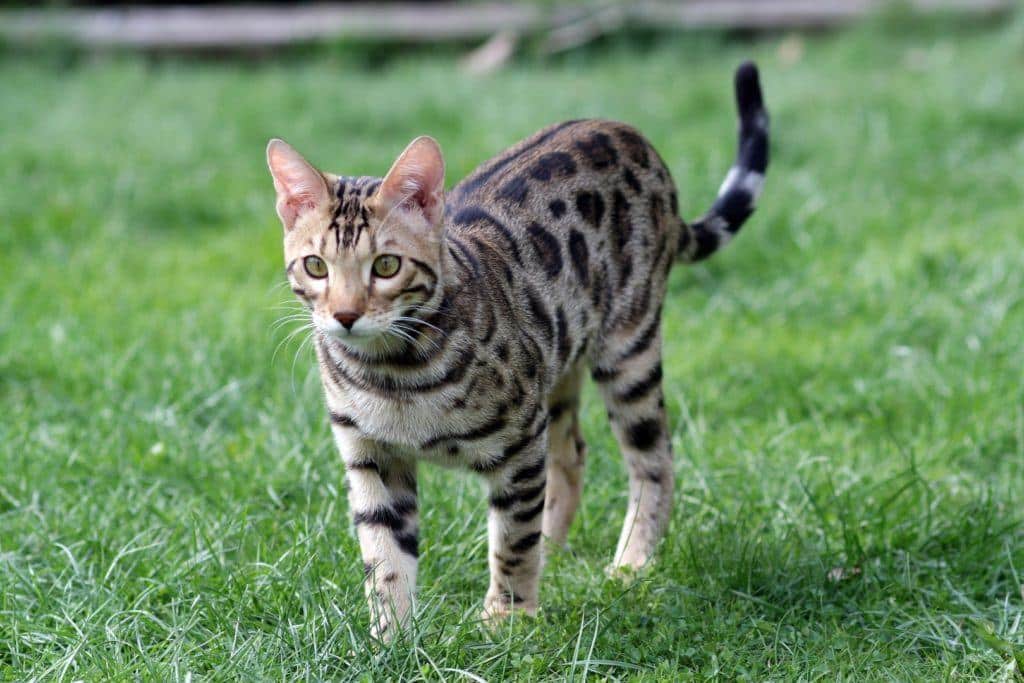
Tails held in a neutral position (in line with their spine) mean just that: a neutral mood. The cat neither wants attention nor is opposed to it. She is probably being passively cautious of the things going on around her, and doesn’t feel one way or another about it.
4. Flicking Tail
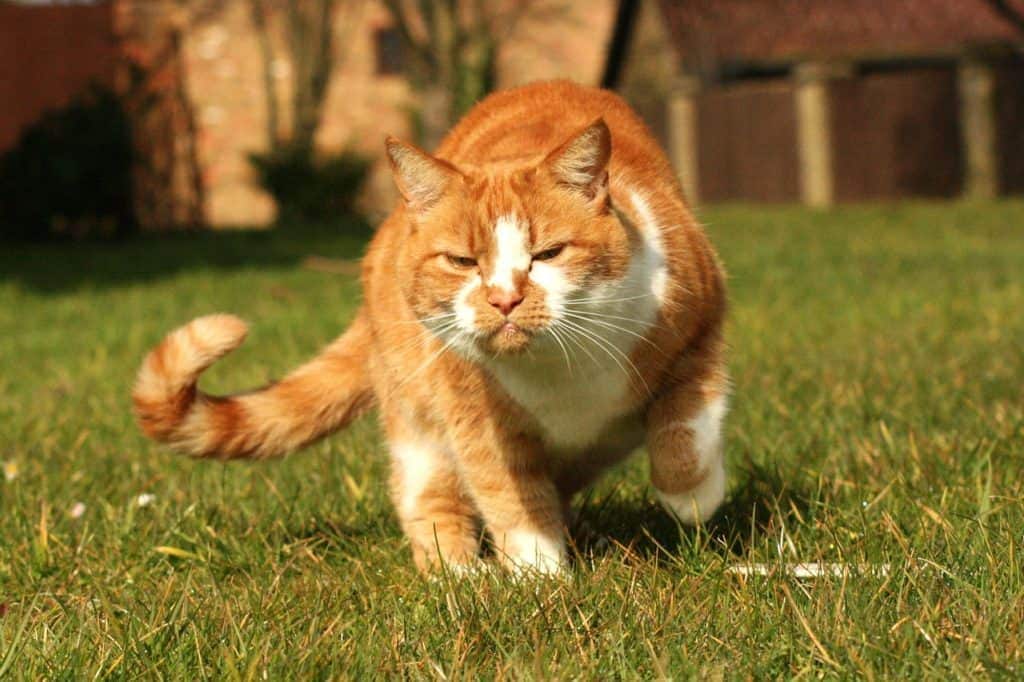
The flicking tail is thought to be an involuntary movement. Your cat swishes her tail gently in her sleep or lounging. This indicates a relaxed cat. When she’s focused on something intriguing, or about to playfully pounce on something (like another cat), it will turn more in to a deliberate flick back and forth.
5. Thrashing Tail
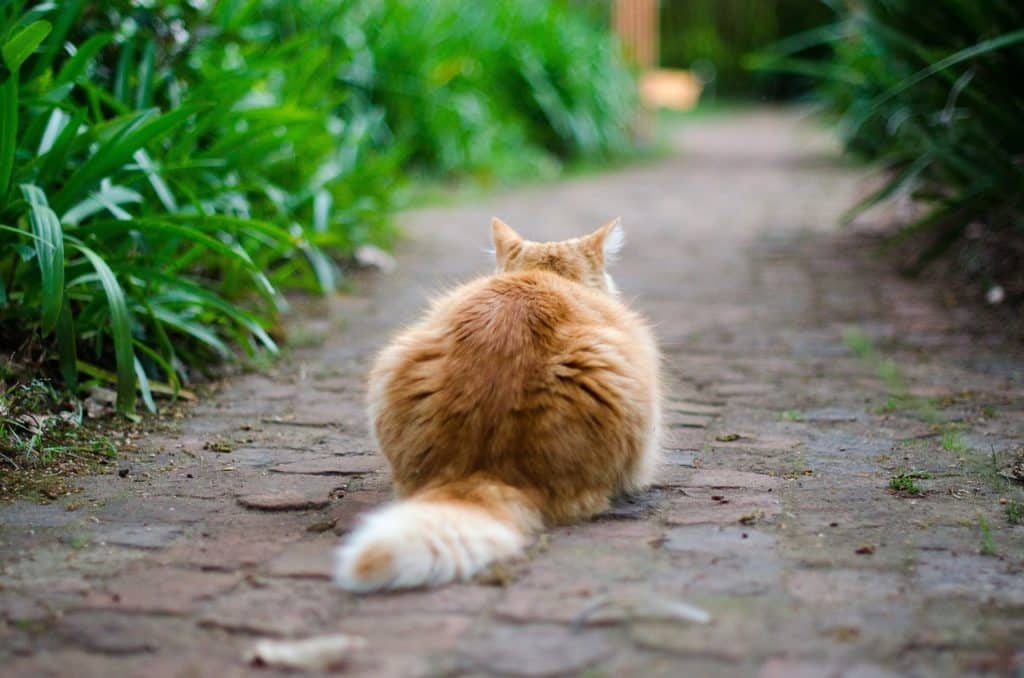
Thrashing tails will create a “thump” noise on the ground. This noise means that kitty doesn’t like what you’re doing, and you should probably change course or you’re going to get hurt! Sometimes cats will engage in more aggressive than average play with other cats and display this kind of tail movement.
6. Wiggling Tail
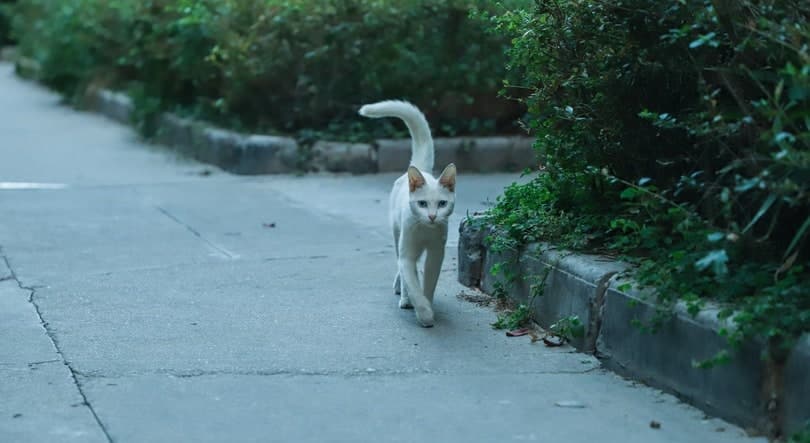
A tail held straight up and almost vibrating is a very good sign. Your cat is in a great mood. He’s likely happy to see you, or you are about to give him some awesome treats.
7. Brushing Tail
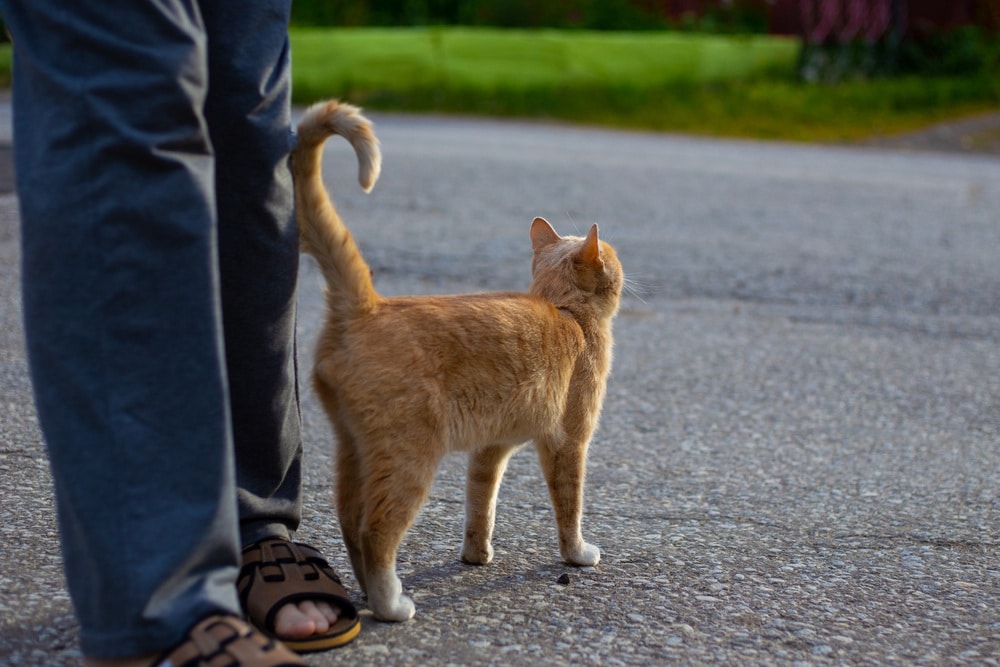
Another good tail movement coming from your cat is when your cat idly walks by, brushing you with his tail. It almost wraps around your leg, it’s so intentional. This is thought to be a voluntary action and a sign of affection.
Conclusion
The different cat tail positions tell us what cats are thinking and feeling. Hopefully, now you have a better understanding of a cat’s control of their own tail and what it means. Remember that a cat’s tail is sensitive, so it’s best to not hold your cat’s tail or try to pet it; they do not care for it.
See Also:
Featured Image Credit: italay, Shutterstock

